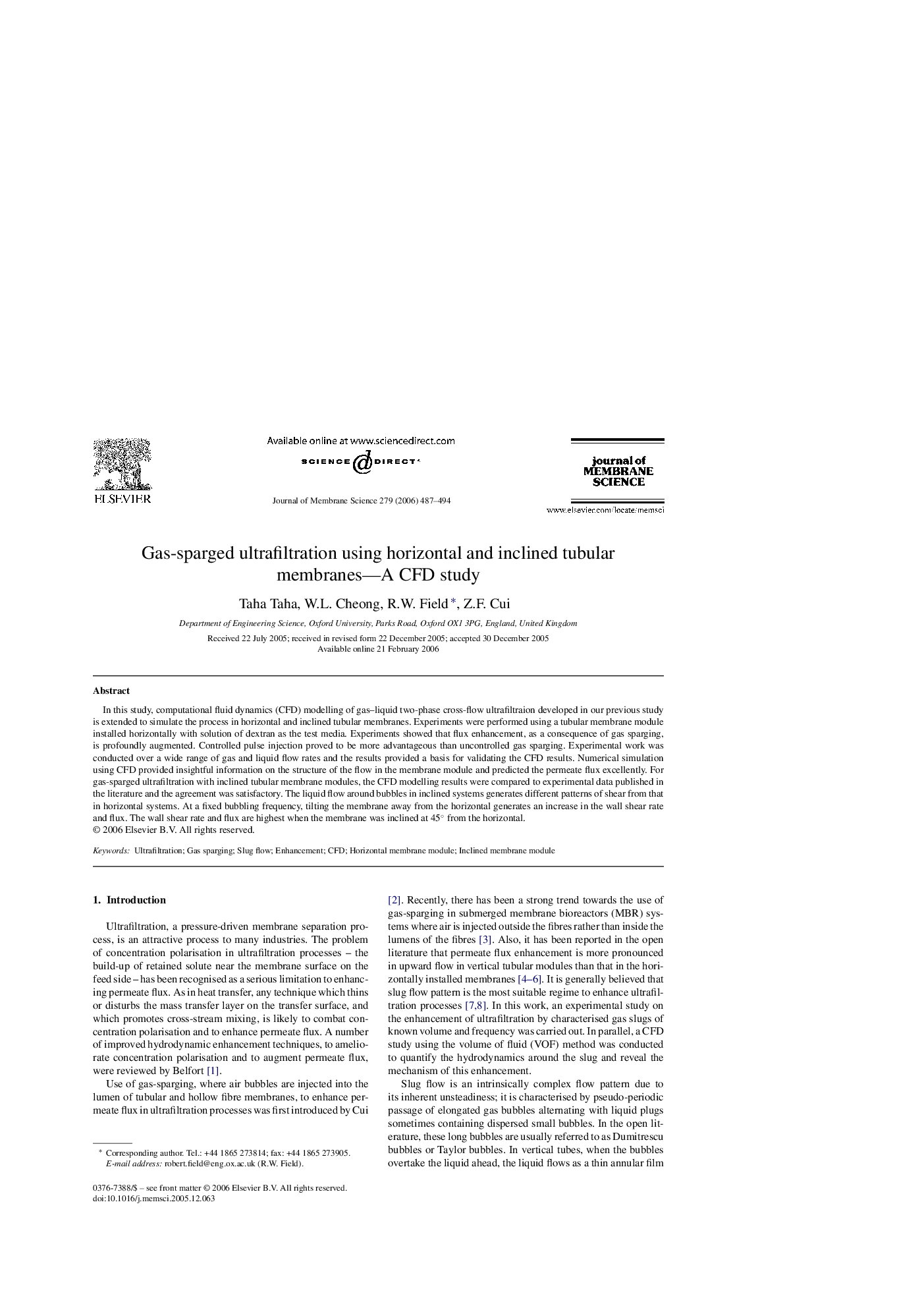| Article ID | Journal | Published Year | Pages | File Type |
|---|---|---|---|---|
| 639422 | Journal of Membrane Science | 2006 | 8 Pages |
In this study, computational fluid dynamics (CFD) modelling of gas–liquid two-phase cross-flow ultrafiltraion developed in our previous study is extended to simulate the process in horizontal and inclined tubular membranes. Experiments were performed using a tubular membrane module installed horizontally with solution of dextran as the test media. Experiments showed that flux enhancement, as a consequence of gas sparging, is profoundly augmented. Controlled pulse injection proved to be more advantageous than uncontrolled gas sparging. Experimental work was conducted over a wide range of gas and liquid flow rates and the results provided a basis for validating the CFD results. Numerical simulation using CFD provided insightful information on the structure of the flow in the membrane module and predicted the permeate flux excellently. For gas-sparged ultrafiltration with inclined tubular membrane modules, the CFD modelling results were compared to experimental data published in the literature and the agreement was satisfactory. The liquid flow around bubbles in inclined systems generates different patterns of shear from that in horizontal systems. At a fixed bubbling frequency, tilting the membrane away from the horizontal generates an increase in the wall shear rate and flux. The wall shear rate and flux are highest when the membrane was inclined at 45° from the horizontal.
